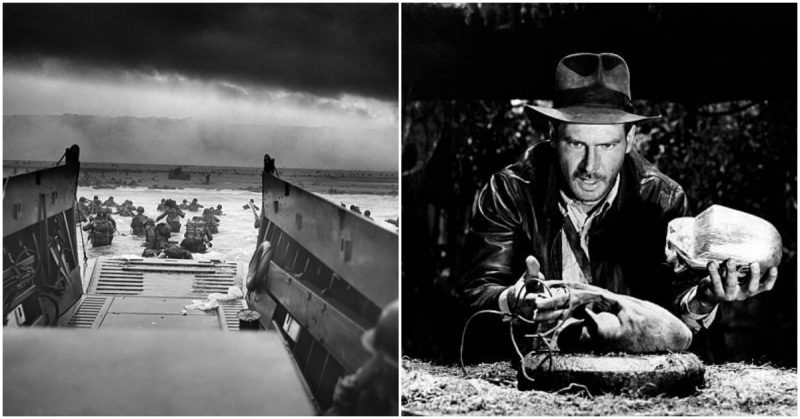Saving Private Ryan is a 1998 film set during the Invasion of Normandy in June 1944. It was directed by Steven Spielberg and stars Tom Hanks and Matt Damon. It won 5 academy awards and a Golden Globe Award for best motion picture. It has been praised for the realistic way in which it filmed the battle scenes. The film magazine Empire described the sequence showing the landing of U.S. forces at Omaha Beach as the ‘best battle scene of all time.’ The scene was named Number One on TV Guide’s ’50 Greatest Movie Moments.’
Omaha Beach was the name given to one of two positions where U.S forces landed in Normandy on D-Day, 6 June 1944. The other was Utah Beach.
The action in the scene is indeed very close to actual historical events. As shown in the film, many soldiers suffered from sea sickness. Many were shot even before they could reach the shore. Once ashore it was difficult to join up with other units on account of the heavy enemy fire. German machine guns in fortified positions shot at them, and they were continually shelled by artillery.
Spielberg meant to honour those who fought, and so he did not want the battle to look romantic as many World War II war films before had done. He wanted to show the real suffering and intense emotion of the soldiers.
Here are 20 amazing Saving Private Ryan facts that may surprise you….
20. Ireland, not France
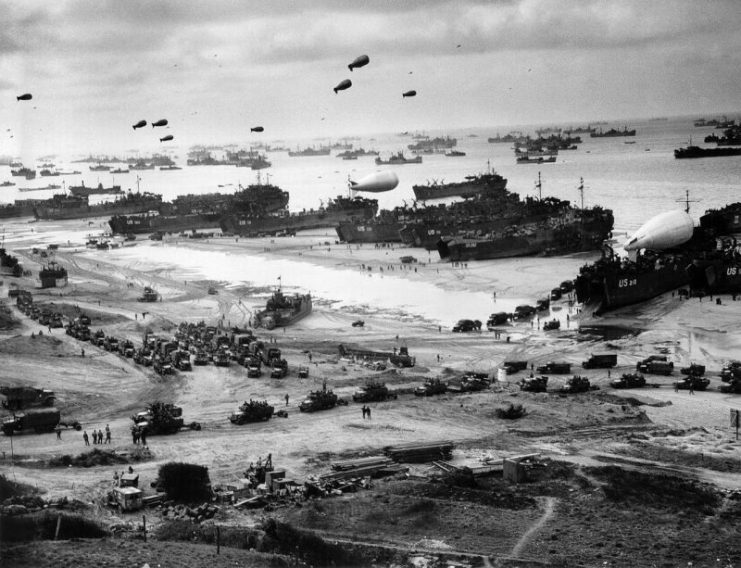
The opening sequences of the landing on Omaha Beach in Normandy on D-Day were actually shot in Ireland, not France.
The French government would not give permission to the producers to shoot on Normandy’s beaches.
19. Barrels of Blood
It is rumored that forty barrels of fake blood were used in the Omaha Beach scene to simulate the effect of blood in the seawater.
All this dedication, attention to details and commitment has paid off; the Omaha Beach scene is still regarded as the best of all time.
18. Chronological order
The movie Saving Private Ryan was shot in chronological order, which usually does not happen.
Spielberg chose that method so that the actors would feel like they were going through the experience, including losing fellow soldiers along the way.
This also helped them portray their resentment towards Private Ryan, who does not share the journey with them.
17. They were speaking Czech
The unarmed men who are shot during the opening scene are not speaking German. They are speaking Czech.
Parts of the Normandy coast were defended by Ost (East) battalions — pressed into service in the Wehrmacht — made up of men from places like Czechoslovakia, the Soviet Union, Uzbekistan, and Armenia.
16. Afraid of Water
Billy Bob Thornton was offered the role of Technical Sergeant Mike Horvath (ultimately played by Tom Sizemore) but turned it down because he has a fear of water and didn’t want to shoot the landing scenes.
Spielberg was hesitant to use Sizemore because he was battling a drug addiction at the time of filming.
The director had Sizemore undergo daily drug tests and threatened to boot him from the set and re-shoot every scene if he tested positive.
15. Ad-libbing
The story bout his brothers in the barn with Alice Jardin that Private Ryan tells was not part of the script.
Matt Damon ad-libbed it, and Spielberg decided to use it in the final cut.
14. Guns, sound like real thing
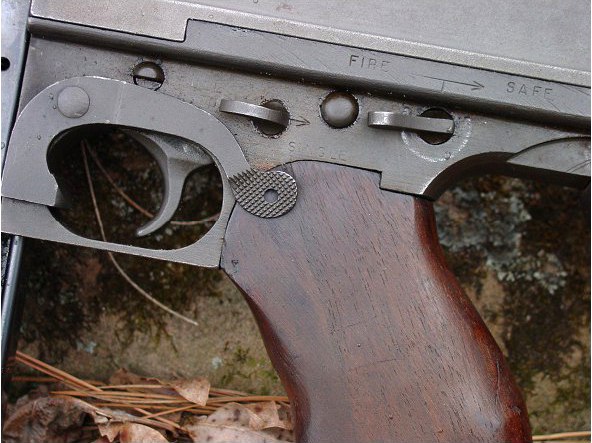
All the firearm sounds you hear during the movie are the actual sound that the real WWII guns make.
Steven Spielberg used only the sounds of these weapons to make the film more authentic.
13. The Stabbing Scene
In the dreadful scene in which Pvt. Stanley Mellish is slowly being stabbed by a German soldier, his attacker whispers in German:
“Give up. You have got no chance. This way is much more easy for you. Much easier.”
12. The only fake amputation
Colonel I.W. Bryce, played by Bryan Cranston (now famous from “Breaking Bad”) is the only person in the movie who uses a fake amputee.
11. Matt is too skinny!
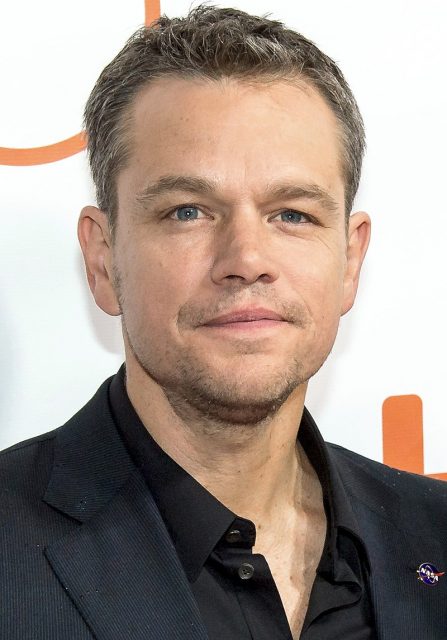
At first, Spielberg thought Matt Damon was too skinny to play Private James Ryan.
But luckily for Matt, he changed his mind after meeting that was arranged by Robin Williams.
10. Shorter is better
Had Spielberg not cut around 5 minutes of war violence from the film, the MPAA would have given it an NC-17 rating.
9. Too old!
The character Tom Hanks’ played is a 41-year-old Army captain.
In reality, infantry captains in the second world war would have been around the age of 26.
8. Ramelle doesn’t exist
The final battle of the movie takes place in the town called Ramelle, and it is the only fictional town in the movie.
All the other locations used are real and were actual the objectives during the D-Day invasion.
Ramelle, which includes the river, was created from scratch in a massive a studio in England.
This same area was later used and expanded during the filming of the HBO hit series “Band of Brothers.”
7. Sniping through the scope
When Sniper Jackson shoots the German sniper in the eye, through the telescope is a bit of an homage to Marine Corps sniper Carlos Hathcock.
In Vietnam, Hathcock shot an enemy sniper through the scope, a feat that many have tried to duplicate but none have succeeded.
6. Missing Limbs
During the filming on the beach, extensive use was made of people with missing limbs.
20 to 30 of the extras used in the Omaha Beach scene were actual amputees; they wore prosthetic limbs that were blown off in the attack.
5. The Fake Tiger Tank
The producers were not able to use a real tiger tank for the movie so a Russian T34/85 was converted to look like a Tiger.
This explains the visual differences like the non-interweaving wheels.
The placement of the turret near the front made the Tiger used in the movie look more like a Tiger built by Porche instead of one built by Henschel; this is also an artifact of the T34/85 chassis.
The mantlet is also much narrower on the movie’s Tiger than on both Tiger 1 models; this gives the turret a more pointed look rather than the round shape which the turret historically had.
4. Dale Dye
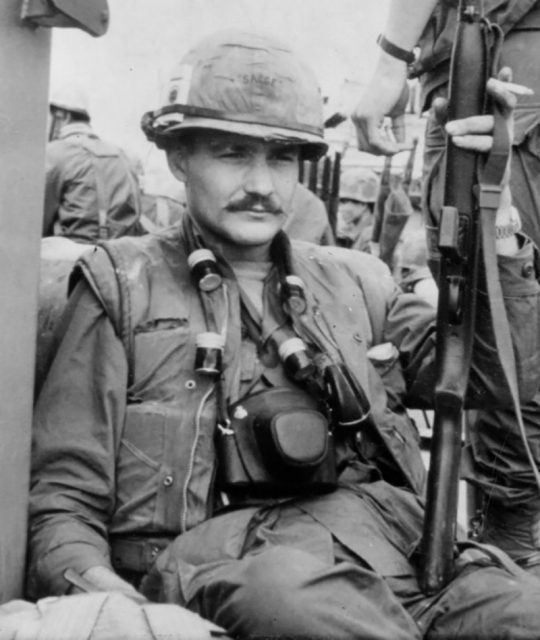
Dale Dye saw service in Vietnam and was a Captain when he retired from the Marine Corps he is the man that all good war movies use.
In Saving Private Ryan he served as an advisor, and he set up a boot camp.
He has been in many war movies such as ‘Platoon,’ ‘Casualties of War,’ ‘The Great Raid,’ ‘Born on the Fourth of July’ and ‘Rules of Engagement,’ among others.
3. Boot Camp
The entire cast had to go through a grueling week-long boot camp, which they struggled to cope with as it was made as realistic as possible.
Only Tom Hanks and Matt Damon were exempted.
Hanks had previous experience in military life when he was making Forrest Gump.
Damon was exempted so real resentment against him from the rest of the cast would be build up.
2. 206 Deaths
The on-screen deaths have been counted and amounted to a total of 206 shown during the movie, with another 49 bodies shown of soldiers whose death wasn’t shown in the film.
The film was praised for the realistic portrayal of war.
1. Bonus: Hanks, Gibson or Ford
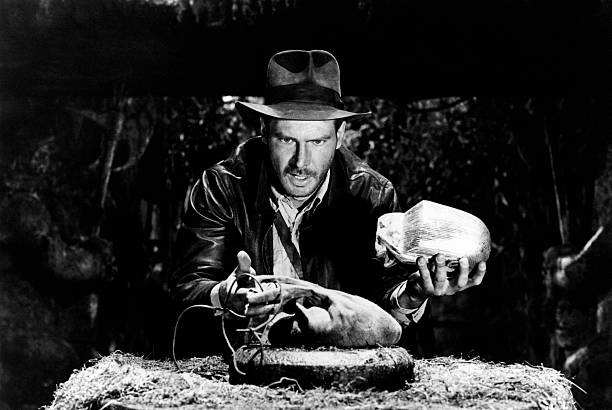
It is difficult to imagine Saving Private Ryan without Tom Hanks; his performance was of such high quality that he was awarded for Best Actor in the Academy Awards.
However, it could very well have been somebody else that portrayed Captain Miller.
Both Harrison Ford and Mel Gibson were considered by Spielberg before the decision was made to have Tom Hanks in the lead role.
